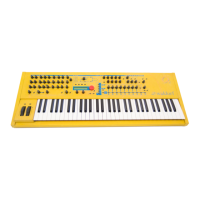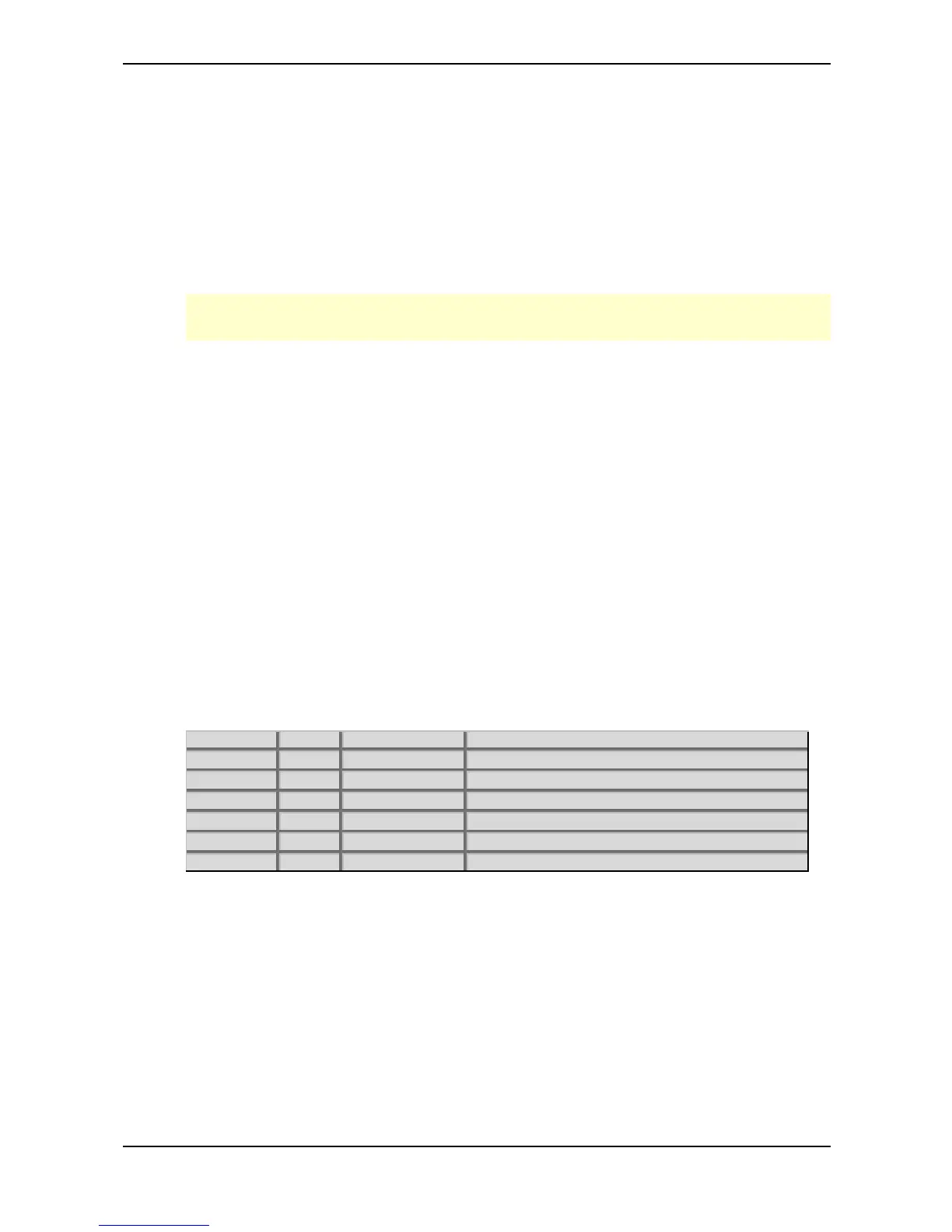Sound Parameters – Arpeggiator
Waldorf Q User’s Manual 114
• Press all keys of the chord simultaneously. This is the standard way as you would do
with the other Arpeggiator Modes, too.
or
• Press and hold the first key of the chord. While holding this key, enter the other keys
sequentially. After playing all keys, you can release the first key. On one hand this
method is practicable for playing difficult chords, on the other hand it is essential
when using the as played setting of the Sort Order parameter. This setting allows
you to create arpeggios in the sequence of played notes. You can even hit the same
note several times and it will appear in the note list accordingly.
You can stop the playback of the Arpeggiator by performing the Panic function, by setting
Mode to Off, On or One Shot, or by sending an All Notes Off message from your sequencer.
Additional Controls on the Q Keyboard
Length 1/192…1/1 / legato
Sets the length of the generated arpeggio notes. When Length is set to a value between 1/192 and
1/1, the Arp Steplen parameter may change the actual length of each step relatively. However, when
Length is set to legato, all arpeggio notes are played without pauses between each step and Arp
Steplen therefore has no effect.
Range 1 Oct…10 Oct
Determines the range of the single notes in octaves. When it is set to 1 Oct, the note list will be
played back in the same octave as it was originally hit. Greater values mean that the note list is
repeated in higher or lower octaves. The octave in which the arpeggio starts is determined by the
Direction parameter. If you play notes that span over more than one octave, they are still kept in the
note list and played back before the note list is transposed. The following table shows some possible
arpeggios, all set to Sort Order as played:
Note input Range Direction Resulting Arpeggio
C1 E1 G1 1 Oct Up C1 E1 G1 | C1 E1 G1
C1 E1 G1 2 Oct Up C1 E1 G1 | C2 E2 G2 | C1 E1 G1 | C2
E1 G1 C1 3 Oct Up E1 G1 C1 | E2 G2 C2 | E3 G3 C3 | E1
C1 G1 E2 3 Oct Up C1 G1 E2 | C2 G2 E3 | C3 G3 E4 | C1
C1 E1 G1 3 Oct Down G3 E3 C3 | G2 E2 C2 | G1 E1 C1 | G3
C1 E1 G1 2 Oct Alt Down G2 E2 C2 | G1 E1 | C1 E1 G1 | C2 E2
Table 11: Arpeggio results depending on note input
Tempo
See Sound Tempo.

